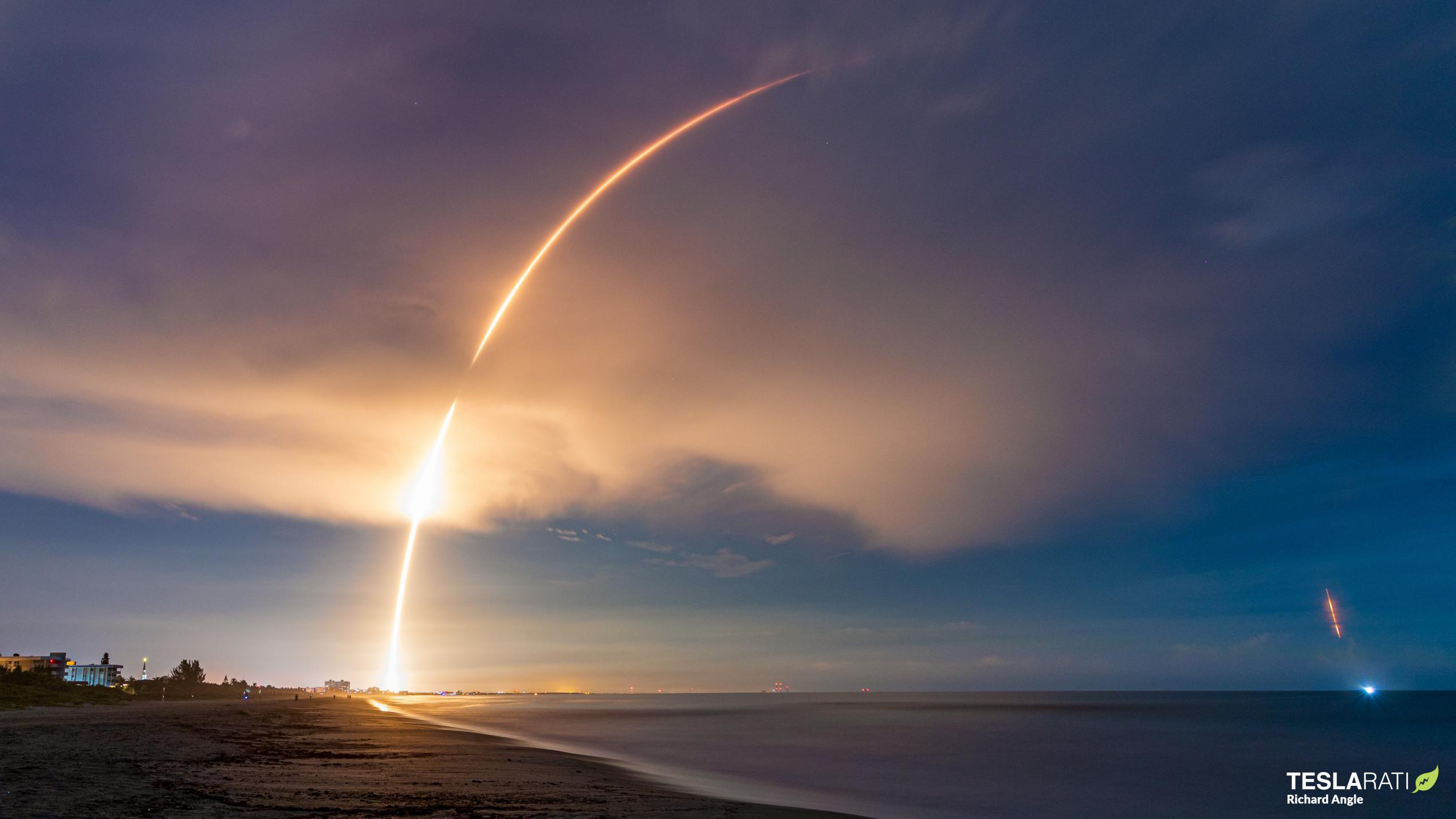
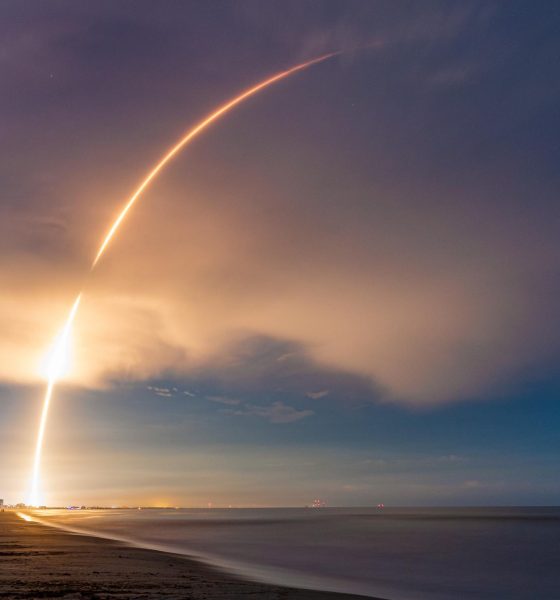
News
SpaceX launches 52nd Falcon 9 rocket in 52 weeks
SpaceX has completed its 52nd successful Falcon 9 launch in 52 weeks, sustaining an average cadence of one launch per week for a full 12 months.
Simultaneously, the Starlink 4-2 rideshare mission set a new record for Falcon 9 booster reuse, marked SpaceX’s 150th consecutively successful launch, and was one of the most complex commercial launches it has ever performed.
In addition to 34 new Starlink V1.5 satellites that joined almost 3000 other working SpaceX spacecraft in orbit, Starlink 4-2 deployed the company’s largest rideshare payload yet – AST SpaceMobile’s 1.5-ton (~3300 lb) BlueWalker 3 communications satellite.
Falcon 9 lifted off on schedule with the combined 12-ton (~26,500 lb) payload safely secured inside its composite payload fairing at 9:20 pm EDT (01:20 UTC) on Saturday, September 10th. Tasked with lifting the rocket’s expendable upper stage, recoverable fairing, and payload most of the way out of Earth’s atmosphere was Falcon 9 booster B1058, a nine-engine first stage that debuted by launching two NASA astronauts in May 2020.
28 months later, B1058 lifted off with Starlink 4-2 and BlueWalker 3 on its 14th spaceflight and orbital-class launch, breaking Falcon 9’s booster reuse record. The rocket performed no differently than it had every time previously, burning for a bit less than three minutes before deploying the upper stage and returning to Earth. About nine minutes after liftoff, B1058 safely touched down on drone ship A Shortfall Of Gravitas (ASOG), likely setting the booster up to break its own record before the end of 2022. With 13 launches already under their belts, boosters B1051 and B1060 will likely follow B1058 past the same 14-flight milestone in the near future.
Once free from the booster, Falcon 9’s expendable upper stage kicked off SpaceX’s most complex commercial launch ever. Measuring about six minutes long, the first and longest burn brought the second stage and payload into an elliptical orbit a few hundred kilometers above Earth’s surface. A second burn followed about 45 minutes after liftoff, raising the low end of that ellipse to deploy BlueWalker 3 into a circular orbit around 500 kilometers (~310 mi). Using a massive antenna, AST SpaceMobile’s first large satellite prototype will eventually attempt to directly communicate with mobile phones to provide a level of connectivity equivalent to 5G/LTE – all from space.
Once free of its rideshare payload, the focus shifted to Starlink. In theory, SpaceX could have taken the easy way out and significantly simplified the mission by deploying all 34 satellites at the same altitude as BlueWalker 3, simultaneously allowing them to reach their operational 540-kilometer (~336 mi) orbits in days instead of months. Instead, SpaceX pursued an exceptionally complex mission requiring five burns from Falcon 9’s upper stage.
After deploying BlueWalker 3, Falcon 9 S2 lowered one end of its orbit at around T+67 minutes, followed by a fourth burn to lower the other end almost two hours after liftoff. The upper stage then spun up end over end and eventually released all 34 Starlink satellites at an altitude of ~335 kilometers (~208 mi), where debris and faulty satellites will take days – rather than years – to reenter Earth’s atmosphere and burn up.
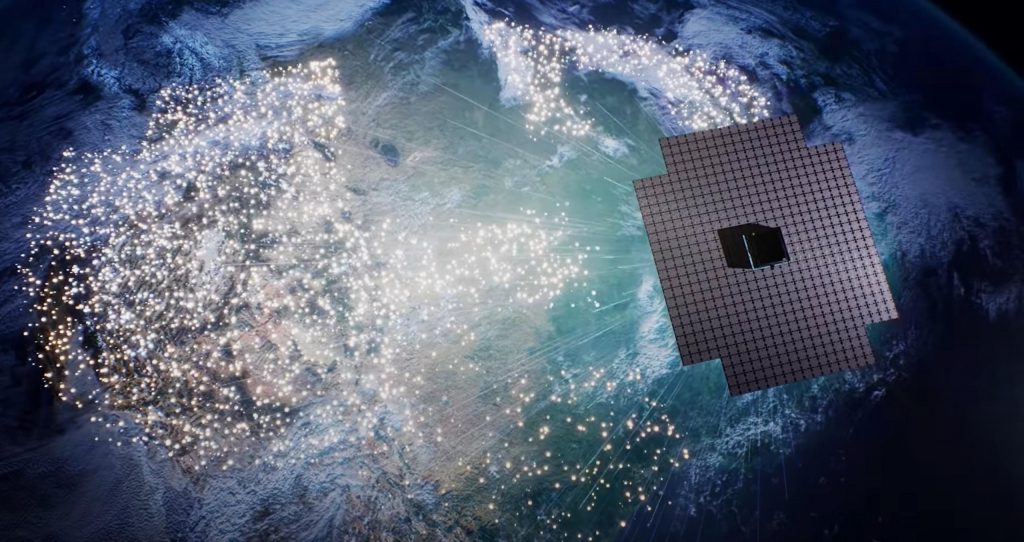

While SpaceX doesn’t confirm post-payload operations, Falcon 9 S2 was also scheduled to perform a fifth and final burn to quickly deorbit itself, ensuring that the mission only produced five pieces of benign debris. At their very low orbits, those five pieces (four ‘tensioning rods’ and the BlueWalker 3 payload adapter) will pose next to no threat to other spacecraft or rockets and should reenter within a few weeks.
Starlink 4-2 was SpaceX’s 52nd successful Falcon 9 launch since September 14th, 2021, meaning that the company has technically already achieved CEO Elon Musk’s goal of 52 launches in one year – albeit not a calendar year. Perhaps even more impressive, the mission was SpaceX’s 150th consecutively successful Falcon launch. No other single rocket (Falcon 9) or rocket family (Falcon) has launched more times in a row without failure.
Finally, Starlink 4-2 was SpaceX’s 42nd launch of 2022. If the company continues its average cadence over the last three months, it could end 2022 having completed more than 60 Falcon launches in one calendar year.

News
Tesla dominates in the UK with Model Y and Model 3 leading the way
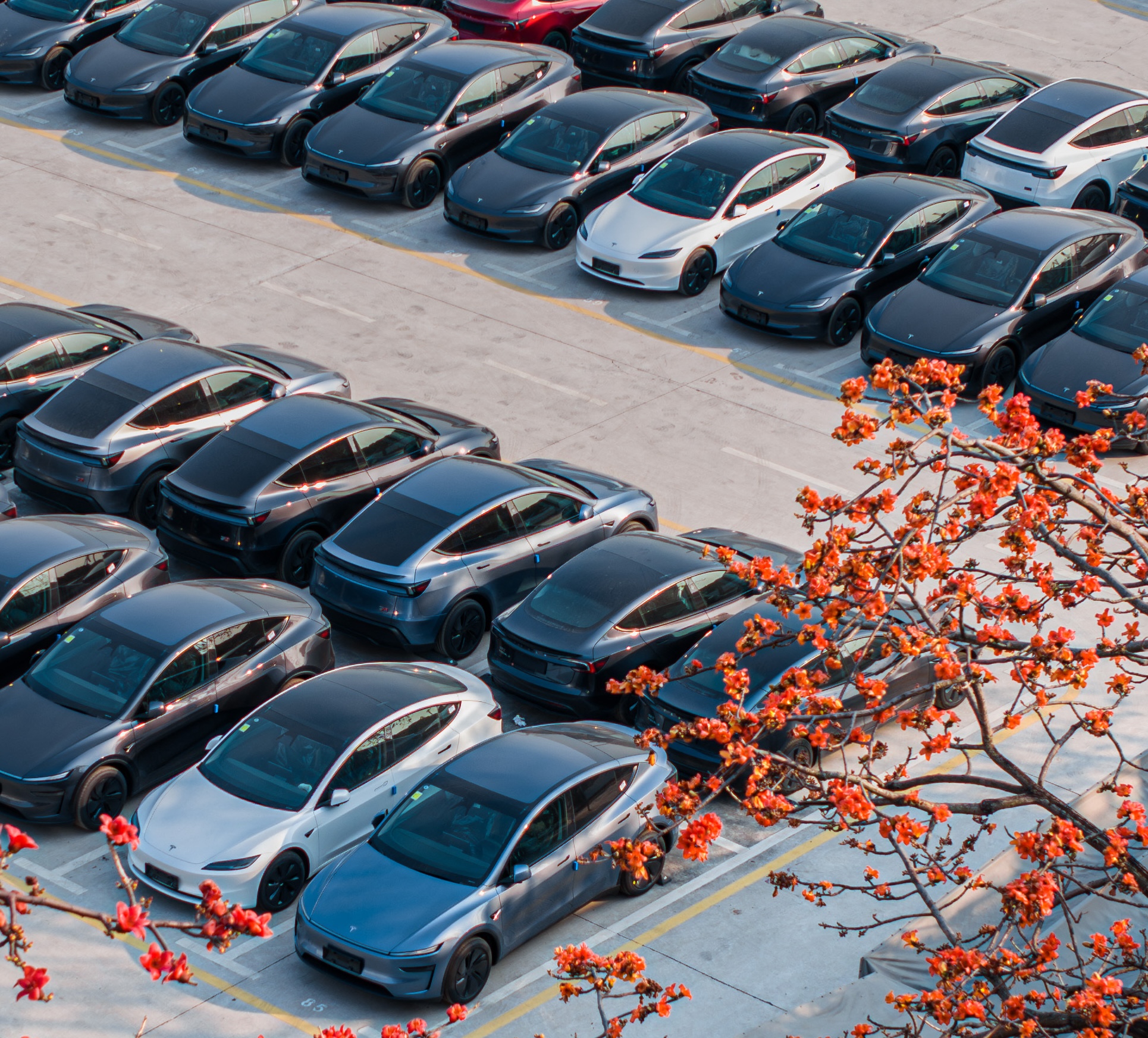
Tesla is dominating in the United Kingdom so far through 2025, and with about two weeks left in the year, the Model Y and Model 3 are leading the way.
The Model Y and Model 3 are the two best-selling electric vehicles in the United Kingdom, which is comprised of England, Scotland, Wales, and Northern Ireland, and it’s not particularly close.
According to data gathered by EU-EVs, the Model Y is sitting at 18,890 units for the year, while the Model 3 is slightly behind with 16,361 sales for the year so far.
The next best-selling EV is the Audi Q4 e-tron at 10,287 units, lagging significantly behind but ahead of other models like the BMW i4 and the Audi Q6 e-tron.
GOOD NEWS 🇬🇧 Tesla is absolutely crushing the UK electric vehicle market in 2025 💥
The numbers are in, and the dominance is clear. With an impressive amount of 42,270 vehicles delivered year-to-date, the brand now commands a solid 9.6% market share of the total auto market 🆒… pic.twitter.com/dkiGX9kzd0
— Ming (@tslaming) December 18, 2025
The Model Y has tasted significant success in the global market, but it has dominated in large markets like Europe and the United States.
For years, it’s been a car that has fit the bill of exactly what consumers need: a perfect combination of luxury, space, and sustainability.
Both vehicles are going to see decreases in sales compared to 2024; the Model Y was the best-selling car last year, but it sold 32,610 units in the UK. Meanwhile, the Model 3 had reached 17,272 units, which will keep it right on par with last year.
Tesla sold 50,090 units in the market last year, and it’s about 8,000 units shy of last year’s pace. It also had a stronger market share last year with 13.2 percent of the sales in the market. With two weeks left in 2025, Tesla has a 9.6 percent market share, leading Volkswagen with 8 percent.
The company likely felt some impact from CEO Elon Musk’s involvement with the Trump administration and, more specifically, his role with DOGE. However, it is worth mentioning that some months saw stronger consumer demand than others. For example, sales were up over 20 percent in February. A 14 percent increase followed this in June.
News
Tesla Insurance officially expands to new U.S. state
Tesla’s in-house Insurance program first launched back in late 2019, offering a new way to insure the vehicles that was potentially less expensive and could alleviate a lot of the issues people had with claims, as the company could assess and repair the damage itself.
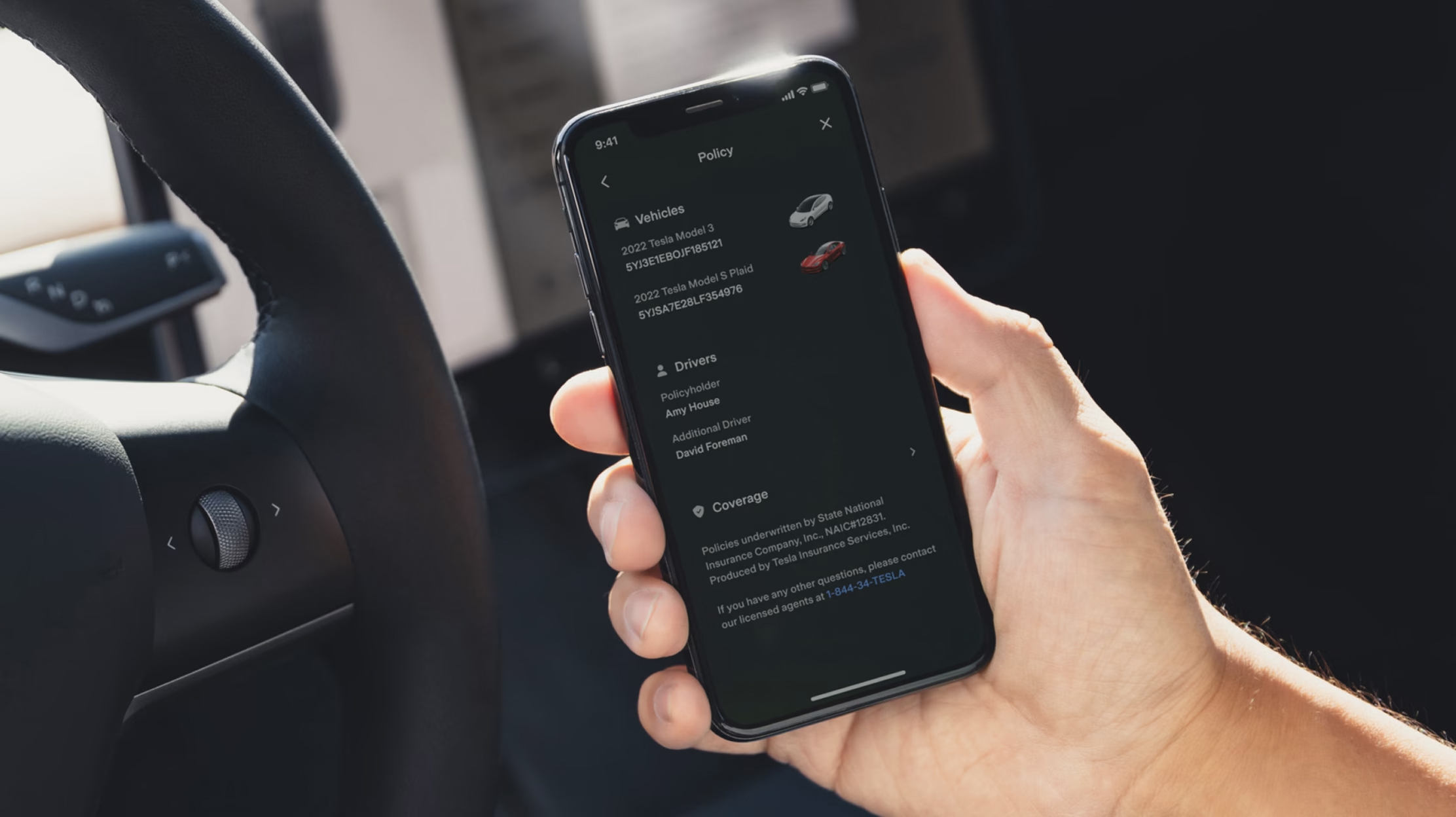
Tesla Insurance has officially expanded to a new U.S. state, its thirteenth since its launch in 2019.
Tesla has confirmed that its in-house Insurance program has officially made its way to Florida, just two months after the company filed to update its Private Passenger Auto program in the state. It had tried to offer its insurance program to drivers in the state back in 2022, but its launch did not happen.
Instead, Tesla refiled the paperwork back in mid-October, which essentially was the move toward initiating the offering this month.
BREAKING: Tesla Insurance has just officially launched in Florida.
This is the first new state to receive @Tesla Insurance in more than 3 years. In total, Tesla insurance is now available in 13 U.S. states (map in thread below of all the states).
Tesla Insurance in Florida uses… pic.twitter.com/bDwh1IV6gD
— Sawyer Merritt (@SawyerMerritt) December 17, 2025
Tesla’s in-house Insurance program first launched back in late 2019, offering a new way to insure the vehicles that was potentially less expensive and could alleviate a lot of the issues people had with claims, as the company could assess and repair the damage itself.
It has expanded to new states since 2019, but Florida presents a particularly interesting challenge for Tesla, as the company’s entry into the state is particularly noteworthy given its unique insurance landscape, characterized by high premiums due to frequent natural disasters, dense traffic, and a no-fault system.
Annual average premiums for Florida drivers hover around $4,000 per year, well above the national average. Tesla’s insurance program could disrupt this, especially for EV enthusiasts. The state’s growing EV adoption, fueled by incentives and infrastructure development, aligns perfectly with Tesla’s ecosystem.
Moreover, there are more ways to have cars repaired, and features like comprehensive coverage for battery damage and roadside assistance tailored to EVs address those common painpoints that owners have.
However, there are some challenges that still remain. Florida’s susceptibility to hurricanes raises questions about how Tesla will handle claims during disasters.
Looking ahead, Tesla’s expansion of its insurance program signals the company’s ambition to continue vertically integrating its services, including coverage of its vehicles. Reducing dependency on third-party insurers only makes things simpler for the company’s automotive division, as well as for its customers.
News
Tesla Full Self-Driving gets sparkling review from South Korean politician
“Having already ridden in an unmanned robotaxi, the novelty wasn’t as strong for me, but it drives just as well as most people do. It already feels like a completed technology, which gives me a lot to think about.”
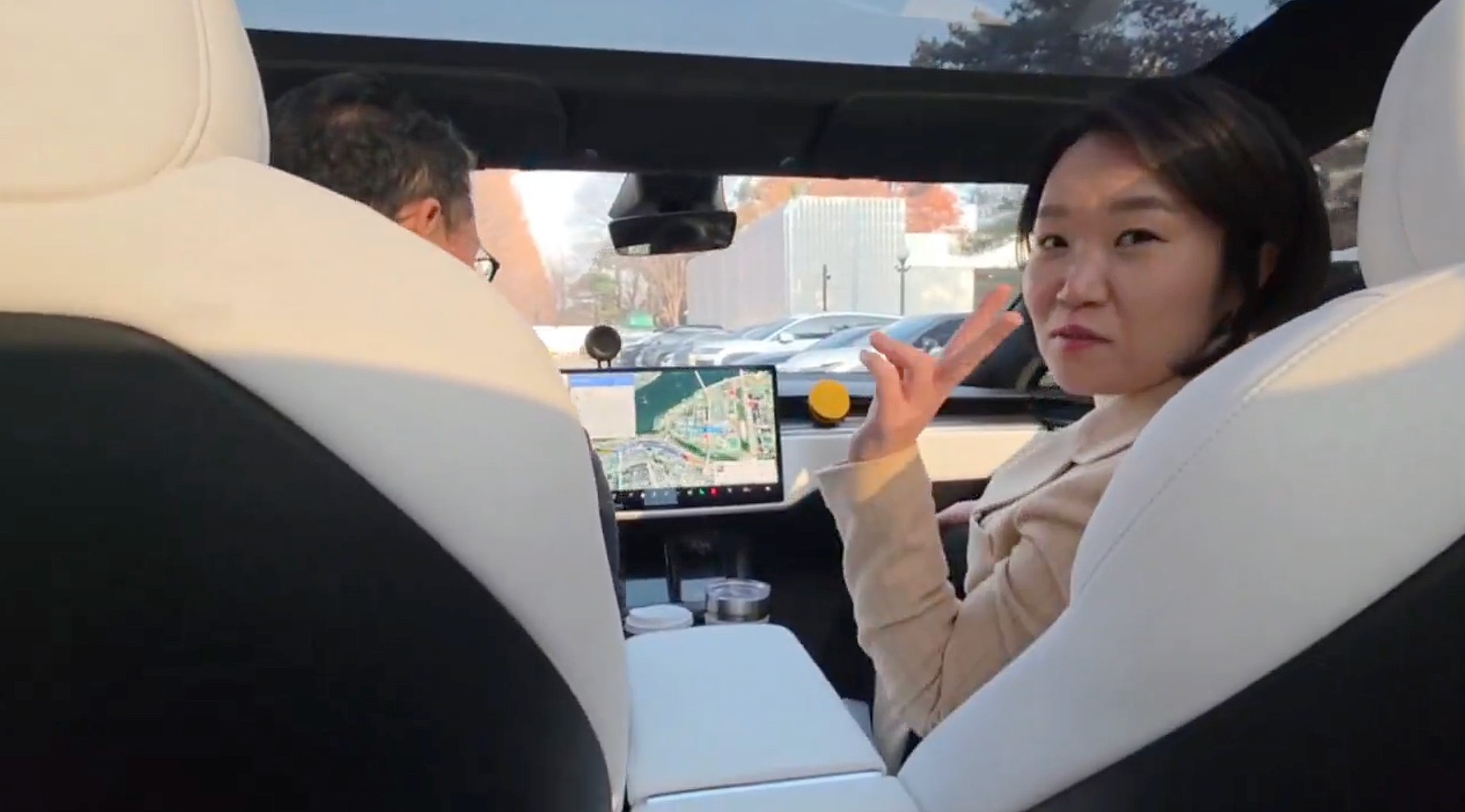
Tesla Full Self-Driving got its first sparkling review from South Korean politician Lee So-young, a member of the country’s National Assembly, earlier this week.
Lee is a member of the Strategy and Finance Committee in South Korea and is a proponent of sustainable technologies and their applications in both residential and commercial settings. For the first time, Lee was able to utilize Tesla’s Full Self-Driving technology as it launched in the country in late November.
Her thoughts on the suite were complimentary to the suite, stating that “it drives just as well as most people do,” and that “it already feels like a completed technology.”
드디어 오늘, 서울에서 테슬라 FSD 체험 했습니다.
JiDal Papa님의 모델S 협찬에 힘입어^^ 파파님 정말 감사합니다.
국회 -> 망원시장 -> 홍익대 -> 국회 복귀 코스였고요.
이미 무인 로보택시를 타봐서 그런지 신기함은
덜했지만, 웬만한 사람만큼 운전을 잘하네요.이미 완성된 기술이라고… pic.twitter.com/8pAidHBpRG
— 이소영 국회의원 (Soyoung Lee) (@im_soyounglee) December 17, 2025
Her translated post says:
“Finally, today I got to experience Tesla FSD in Seoul. Thanks to the Model S sponsored by JiDal Papa^^, I’m truly grateful to Papa. The route was from the National Assembly -> Mangwon Market -> Hongik University -> back to the National Assembly. Having already ridden in an unmanned robotaxi, the novelty wasn’t as strong for me, but it drives just as well as most people do. It already feels like a completed technology, which gives me a lot to think about. Once it actually spreads into widespread use, I feel like our daily lives are going to change a lot. Even I, with my license gathering dust in a drawer, don’t see much reason to learn to drive a manual anymore.”
Tesla Full Self-Driving officially landed in South Korea in late November, with the initial launch being one of Tesla’s most recent, v14.1.4.
It marked the seventh country in which Tesla was able to enable the driver assistance suite, following the United States, Puerto Rico, Canada, China, Mexico, Australia, and New Zealand.
It is important to see politicians and figures in power try new technologies, especially ones that are widely popular in other regions of the world and could potentially revolutionize how people travel globally.








